American Airlines lost $114 million for the third quarter. Traditionally the summer period has traditionally been strong, but quarter-by-quarter variance is no longer as stark for U.S. airlines as it used to be.
They declared ‘record revenue’ for the third quarter. But total revenue was up just $44 million over last year, and was lower in real (inflation-adjusted) terms. Even in nominal dollars, passenger revenue was actually down year-over-year. The airline hasn’t fixed its financial underperformance, but results weren’t as bad as what the market was expecting, and stock started the day up as a result.
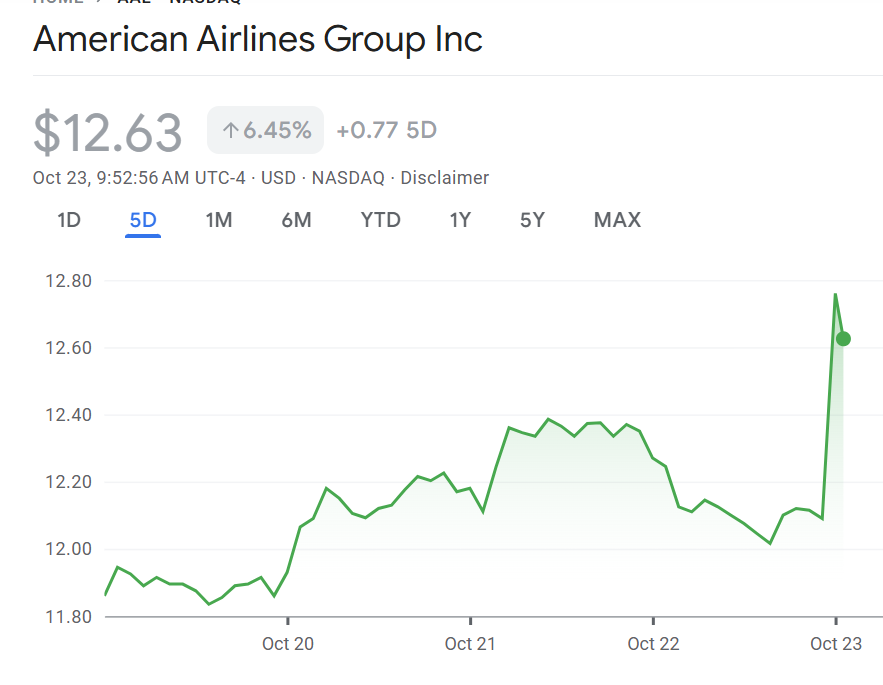
And – recognizing that the airline does have high costs – their shift to a premium focus where they can sell seats for more to customers willing to pay more for what they’re providing makes sense. We just have to see how serious they are about investing in product and service. There was one piece of good news here during the call.
Here are (6) takeaways from the American Airlines third quarter earnings call that you won’t read anywhere else.
- American says they’re winning back corporate travel. The airline is declaring victory in its effort to win back corporate travel. They say corporate revenue was up 14% year-over-year, and will recover their historical share of this business by end of year.
Previously American reported a $1.5 billion hit from losing corporate revenue. When asked during the call how much of that has come back and how much remains, CEO Robert Isom waived his hands, unwilling to answer the question. I take declaring non-specific victory as a desire to no longer talk about managed business travel as the fall guy for financial underperformance (after a year and a half they can no longer blame Vasu Raja) and the numbers suggest that fixing this doesn’t solve their finances as they’ve maintained.
Taking together that passenger revenue is down while the airline says corporate revenue has recovered tells us that corporate revenue was never the revenue problem! And achieving any corporate revenue improvement hasn’t come cheap – it’s part of what’s driving the $363 million increase in personnel and $15 million in selling expenses.
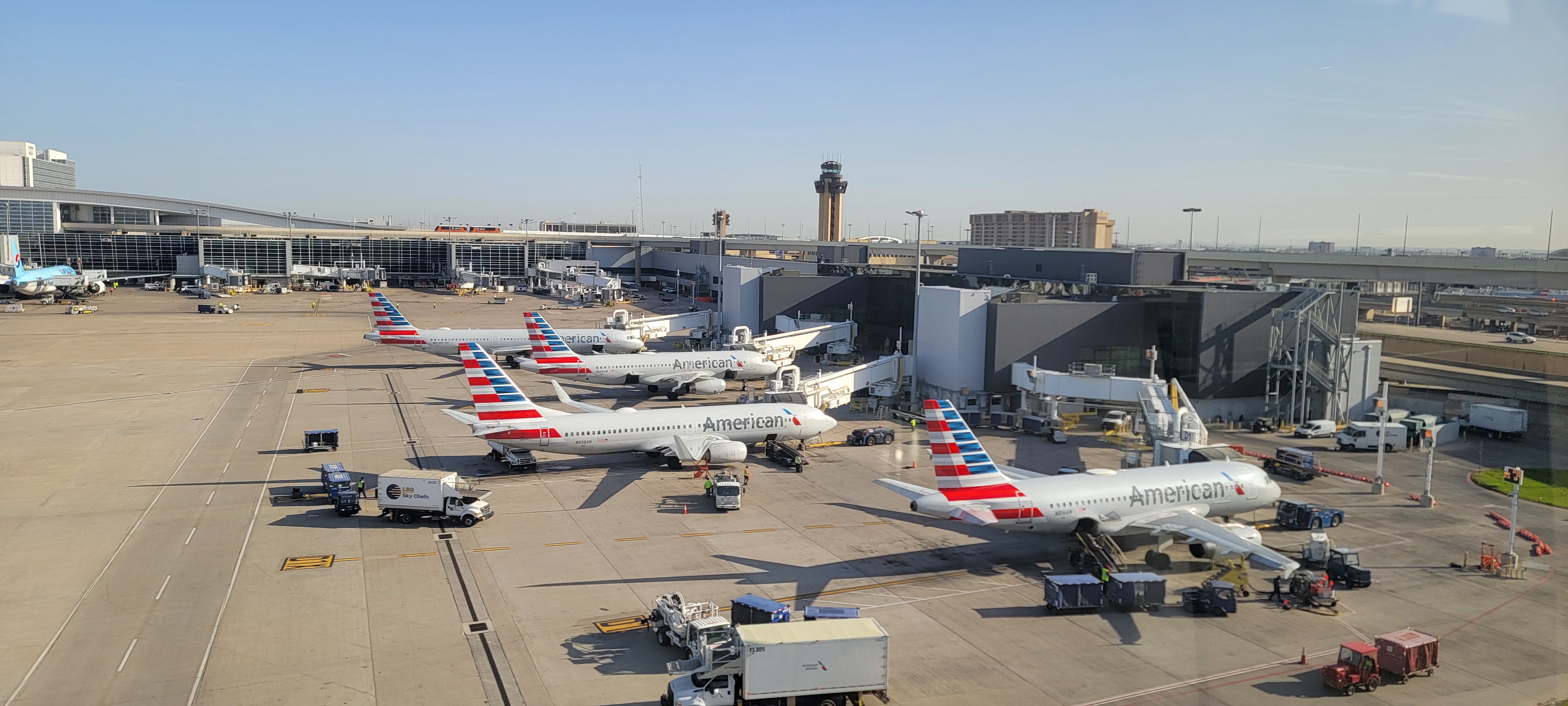
- Maybe winning back corporate travelers is even bad for revenue? Premium leisure yields are exceeding corporate yields now in some markets. J.P. Morgan’s Jamie Baker asked about the tradeoff between pursuing corporate travel and selling premium seats to leisure passengers. In other words, couldn’t the drive to bring back corporate share be hurting them?
Given that they’re selling out many premium cabins now, there could be a real tradeoff, and considering that they aren’t growing revenue the thesis seems consistent with the data – selling seats at high sales expense to corporate travel isn’t just incremental revenue, it’s revenue they aren’t getting selling those same seats to other passengers.
Steve Johnson reported that corporate travelers are AAdvantage members, cobrand cardholders, and move their leisure business to American when they get their corporate business. He flags business traveler being back to 80% of prepandemic levels as potential upside rather than the other possible conclusion that the benefit here is capped.
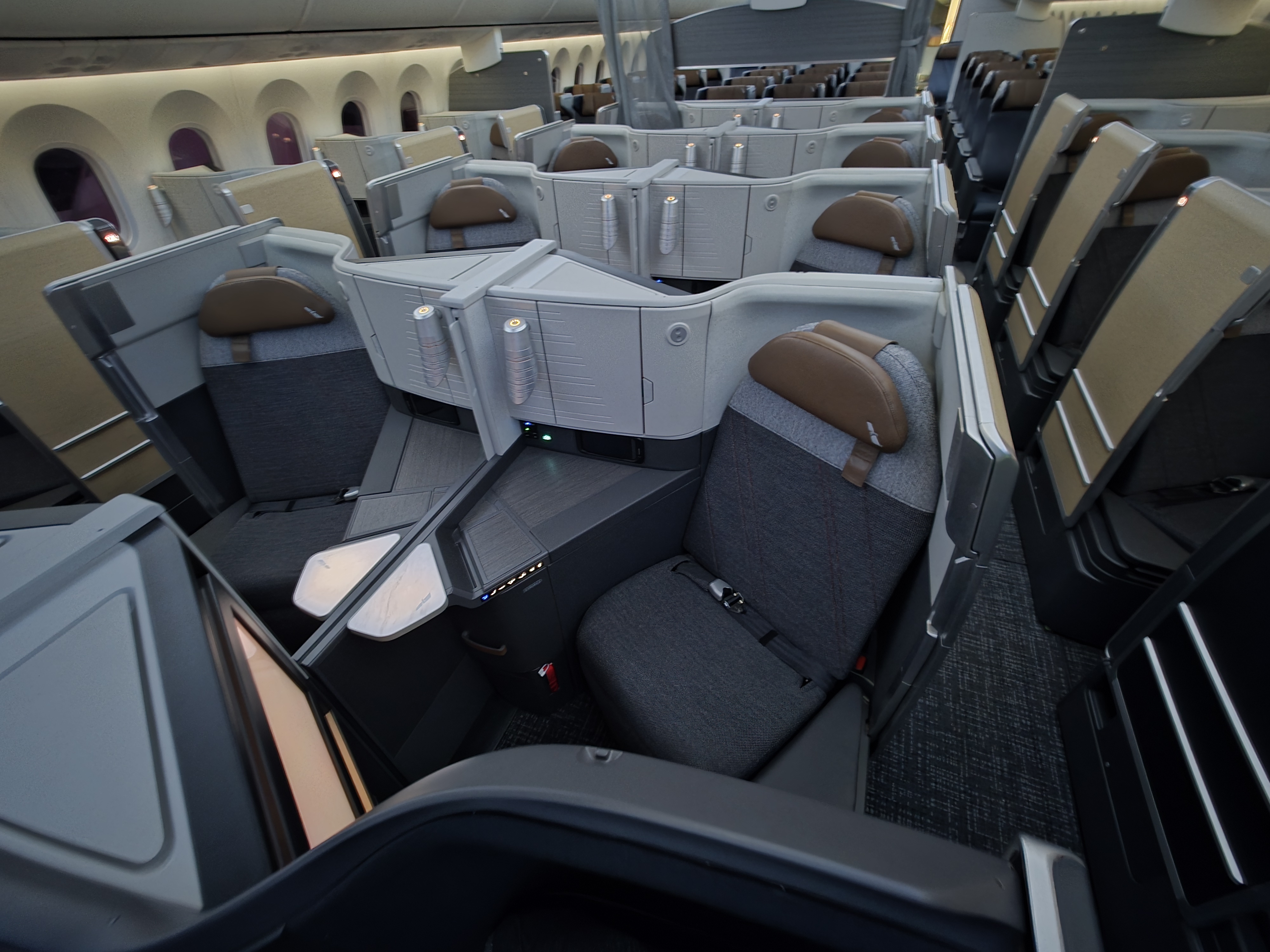
- AAdvantage is where profits come from. Active AAdvantage accounts are up 7% year over year. They don’t define active. Spending on co-branded credit cards increased 9% year over year. American does have a better program than United (though lacks some of United’s partnership breadth) and a better program by a lot than Delta. I’d argue that if American were as strong on the coasts they’d be generating card spend at or exceeding competitors. Their route network just doesn’t align as well with cobrand spend power.
American lost money even while earning close to a billion dollars in revenue from their credit card deals in the quarter, and that’s revenue American previously said came at a 53% margin. They lost money overall, but lost even more than these numbers suggest on their actual flying (and some of that flying revenue is customers redeeming miles, too). Their free cashflow and ability to pay down $38 billion in debt comes from Citibank, not ticket sales.
- New Chief Commercial Officer solidies historical ties to Northwest. American appointed Nat Pieper, CEO of oneworld, as their new Chief Commerical Officer starting next month. Pieper joined oneworld in April of last year, and had served 5 years as Senior Vice President of Fleet, Finance and Alliances at Alaska and had been SVP of Alliances and SVP of Europe, Middle East and Africa at Delta before that. oneworld’s offices are already at American Airlines Dallas headquarters.
Pieper spent 11 years in management at Northwest Airlines (Managing Director of FP&A and Vice President, Alliances). Many of American’s leaders come from CEO Robert Isom’s days at Northwest, and in some ways customers are wrong now to think of American Airlines as America West with a new name, as much as modern Northwest, which was also strongest in the interior of the country and less so on the coasts.
- More premium business class suites are coming. American announced that they will keep and reconfigure Boeing 777-200s, so these will get the airline’s new business class product. That just confirms what I wrote was happening on September 17.
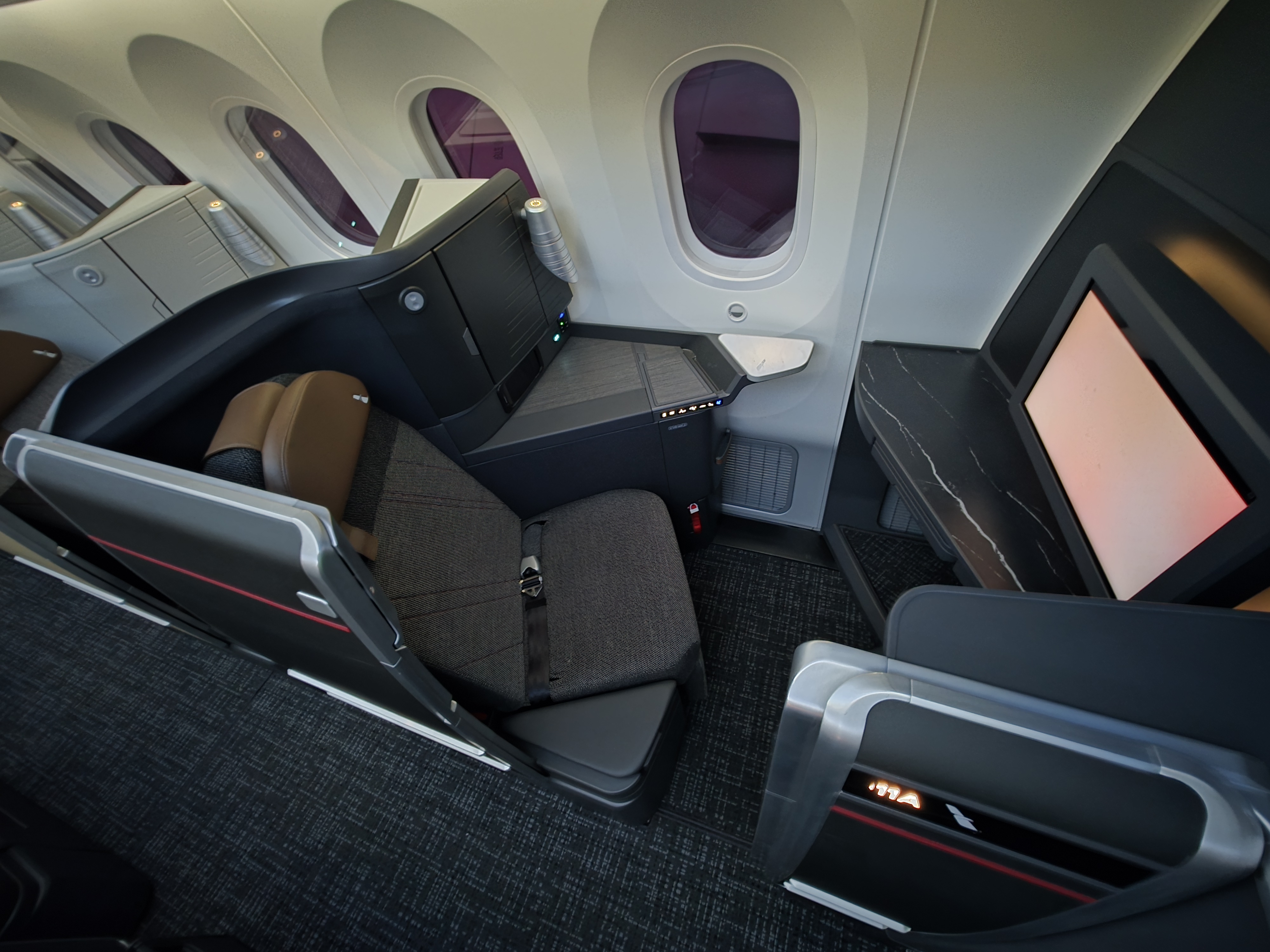
It’s not surprising that they want to extend the life of their Boeing 777-200s rather than retiring and replacing them. I’ve been writing for years that I expected this. New planes are expensive, and the airline has been reticent to make significant capital expenditures. They’ve even deferred new widebody aircraft. Plus, airframe manufacturer order books are full.
However, these seats are expensive! A retrofit program is still significant capital spending, and will mean improved product for customers. I’ve said that the quick wins American is making, fixing several customer-unfriendly policies, is good but that the biggest advances in product and lounges are the result of decisions made years ago.
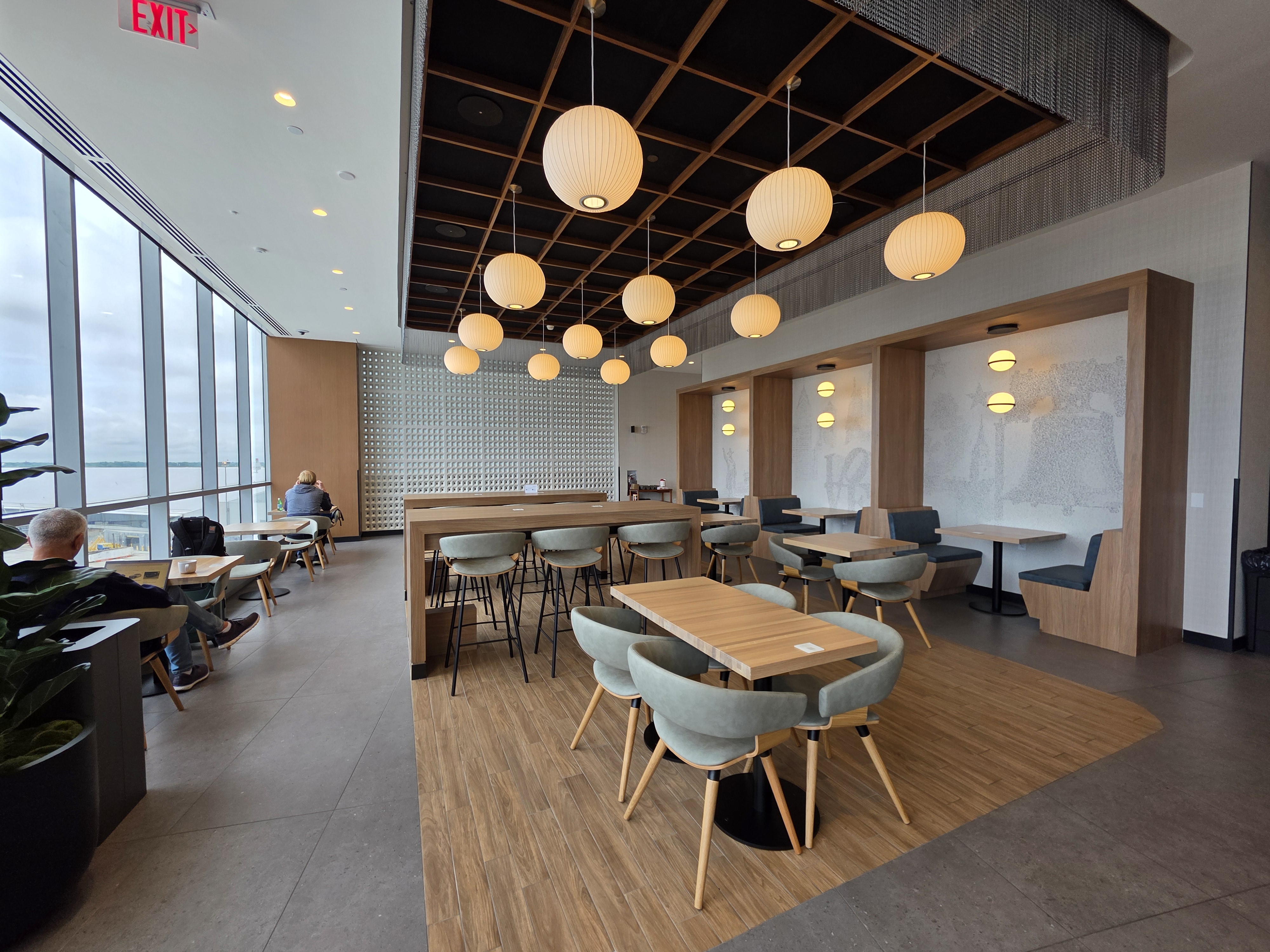
We’ll believe that they’re making real progress on premium when they do real spending on planes and lounges (including lounge refreshes) – and once their CEO starts selling to employees the vision for what the airline can be and the service they’re looking to provide.
- They’re monetizing your upgrades. Paid premium load factor is now nearly 80%, up from mid-60s before the poandemic. That doesn’t mean people paying full flight – it includes paid buy ups for as little as $40. That’s why you can no longer get an upgrade, and status isn’t worth what it used to be. American’s paid premium load factor is still lower than Delta’s, where they report only about 13% of seats up front going to upgrades.
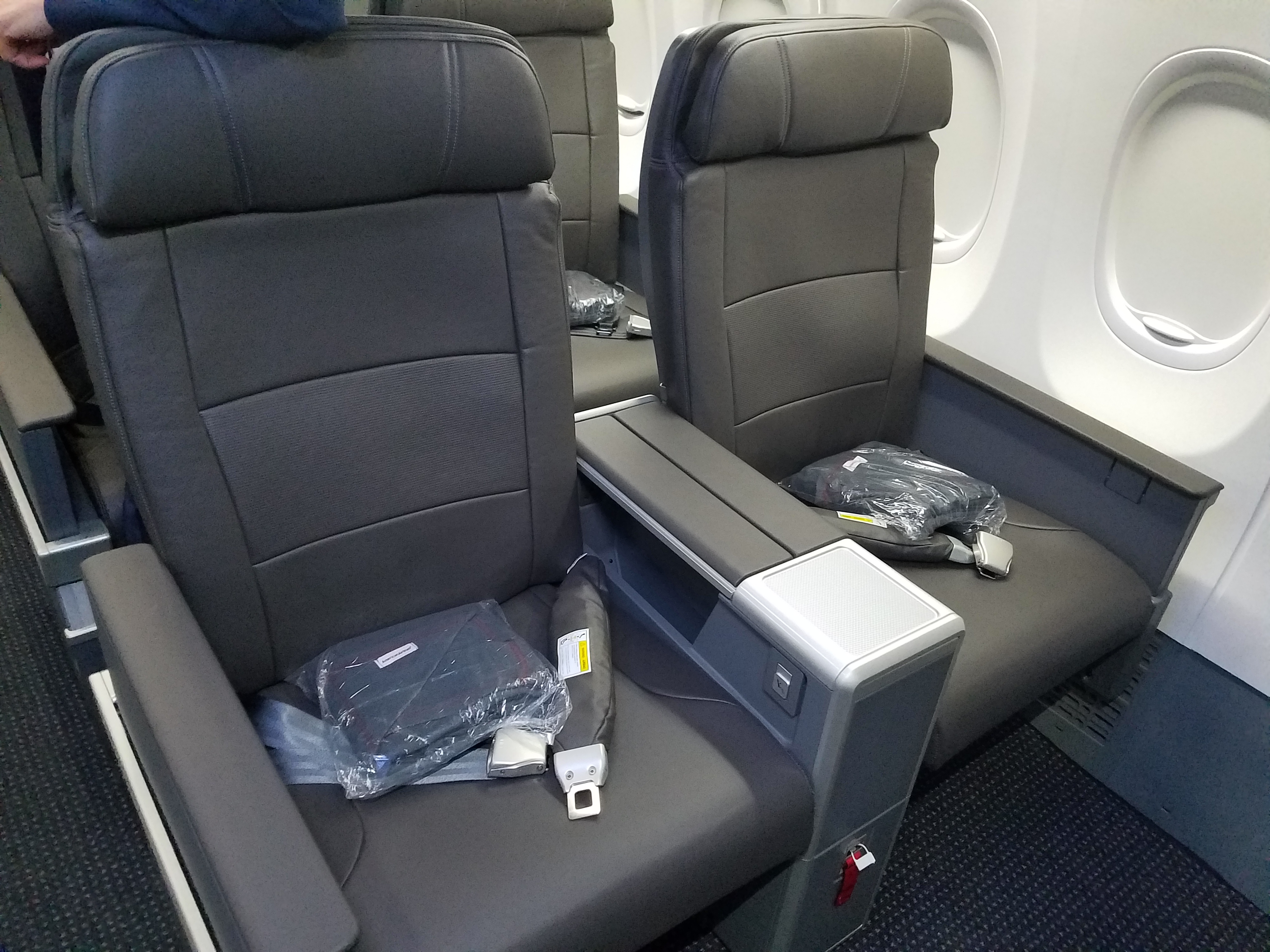
American’s inflight experience is improving with new champagne, coffee, and bedding – and Isom called out specifically amenity kits, though the amenity kits have actually gotten worse. Isom emphasized that while they’re improving the product, it’s not much more expensive. They’re putting Lavazza coffee onto planes, but they save money on the old coffee. It’s efficient. But that just underscores why didn’t they do it before?
And that’s an important point. The challenges the airline faced aren’t new. They didn’t start with a desire to sell tickets directly, rather than through agencies, or to get agents to sell ancillaries.
American’s problems are:
- Route network: they are weak on the coasts and haven’t rebuilt Chicago, which puts them at a spending disadvantage on their cobrand card. Cobrand card spend volume used to be #1 in the industry but is now #3. They made the mistake not understanding what was driving their profits, and pulled back in New York and Los Angeles. The JetBlue partnership was an amazing play to solve New York, and Alaska should have solidified them on the West Coast, but the former unraveled and the latter hasn’t reached its potential.

- LOPA: They haven’t had enough premium seats to sell, and that’s not just business and first class seats. There aren’t enough Main Cabin Extra extra legroom seats. Most passengers are in coach, and these are both buy up opportunities and opportunities to earn repeat business from loyal passengers. American was pulling premium seats out of planes from the time US Airways took over through 2018 and then with the retrofit of domestic cabins after that. This was intentional strategy.
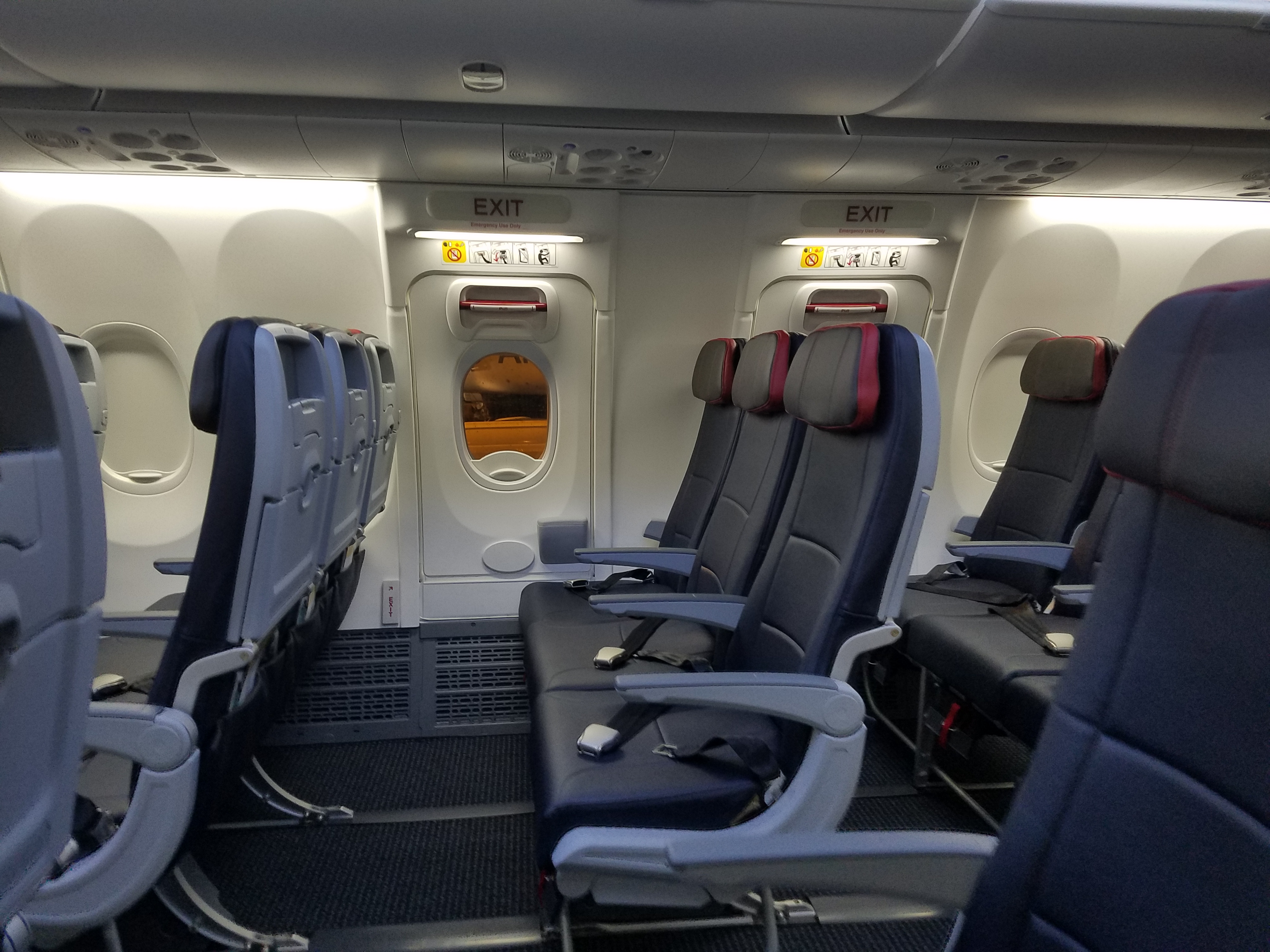
- Products and policies: American’s business class was already in many ways equal to or better than Delta’s and United’s, outside of American’s inexplicably bad wine. They’re fixing some of the bad policies that were focused on their own internal efficiencies rather than the needs of customers. But this was only a piece of the problem.
It is necessary to think in terms of (1) who are their customers? and (2) what do those customers need? How can the airline solve the problems these customers face?
Rather than seeing customer behavior as an impediment to an efficient operation (that they never really achieved anyway, in part because of the drive to underinvest in things like tracking bags when they have the most mishandled bags in the industry, not wanting to spend a dollar they don’t have to. Going forward will customer and product win, or will the CFO win?
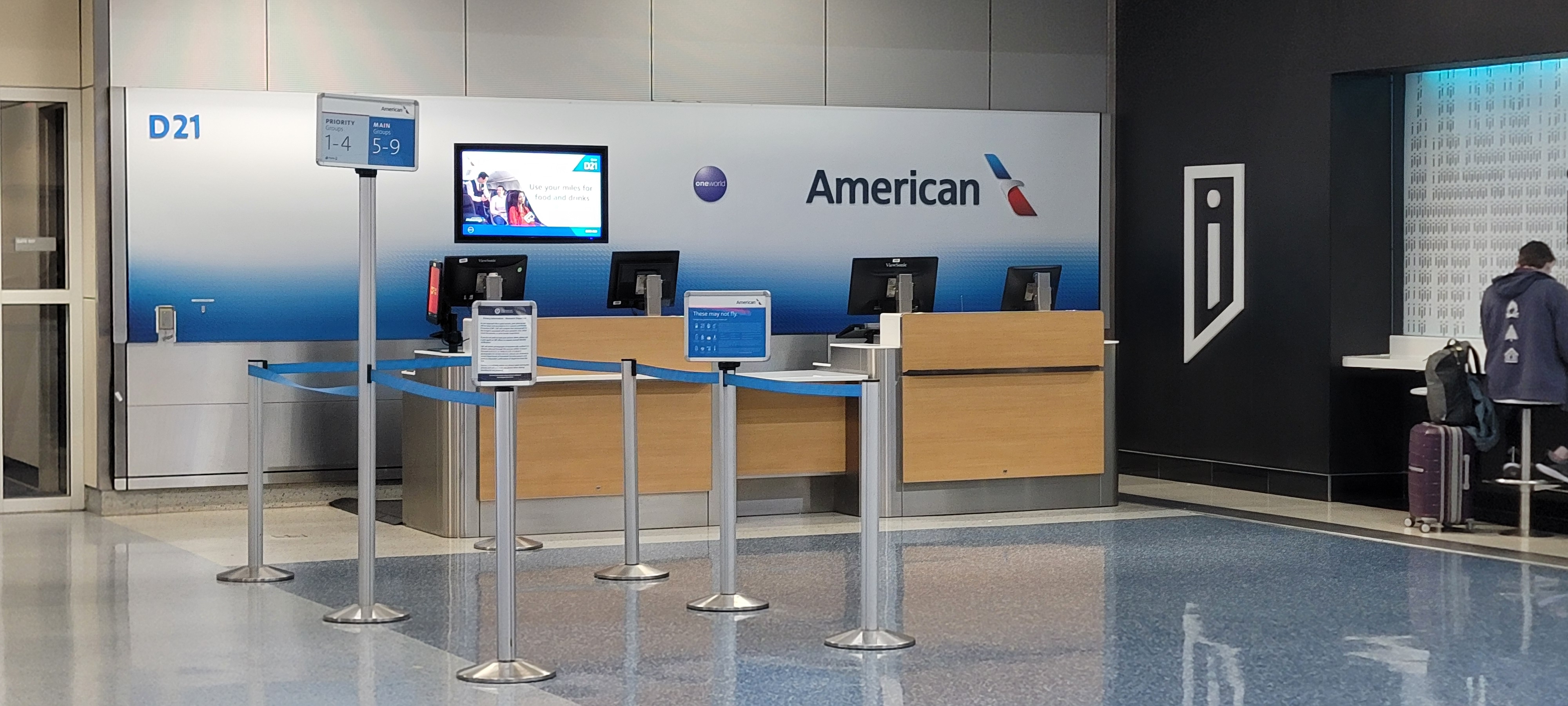
- Service: For many years, the airline viewed itself as competing with Spirit and Frontier and believing that what customers want is cheap fares – not to pay a premium for a better product. As CEO Isom put it,
[T]oday there is a real drive within the industry and with the traveling public to want to have really at the end of the day low cost seats. And we’ve got to be cognizant of what’s out there in the marketplace and what people want to pay.
The fastest growing airlines in the United States Spirit and Frontier. Most profitable airlines in the United States Spirit. We have to be cognizant of the marketplace and that real estate that’s how we make our money.
We don’t want to make decisions that ultimately put us at a disadvantage, we’d never do that.
And as a result employees were confused about the product they were supposed to deliver. Were they trying to be Spirit, or to offer a premium experience? The airline needs to sell and reinforce to its employees that they are in a fight for their lives, and that with new contracts in place higher profits benefit them directly, and so each person’s contributions matter in delivering fantastic experiences.

There’s not much that American Airlines can do to solve their problem at congested airports in the Northeast in one fell swoop at this point (unless they managed to straight up buy JetBlue out from under its new United partnership), though there’s actually a strategy that would let them compete aggressively and execute small wins here every day. But they’re adding premium seats – but not enough extra legroom seats – and they’re improving on product and policies, we just don’t know yet how much and how long this will sustain.
We’re at an important point for American. They could really turn themselves around. They don’t have long to do it. Overall, for the year, they’re still generating positive free cashflow so they can make the necessary investments. They just need to lay out the roadmap for what that looks like, and share with customers and employees the clear vision for where they’re going.
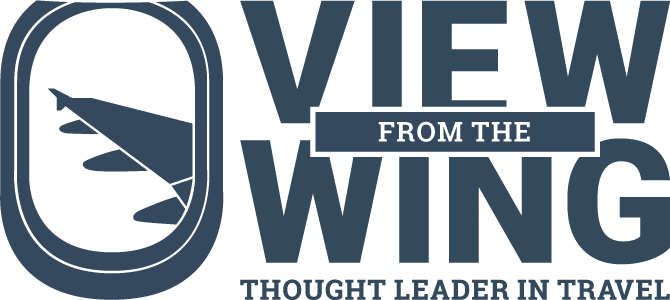

Friends, the ‘market’ is fickle, practically just ‘memes’ these days, and with the rampant ‘insider trading’ and ‘manipulation’ are you sure you wanna even trust anything related to it anymore? You do you, but I’m not touching this, American Airlines or otherwise, anytime soon. Andrew Ross Sorkin’s new book, 1929, is riveting, especially its parallels to today (greed, blind optimism, and human folly; unchecked credit, speculating on margin, over-leveraged.) Ah, don’t worry, ‘this time is different.’
AA missed out on the rise in premium demand assuming the Frontier and Spirit business model would be the future. To that point like Frontier and Spirit operational excellence, which costs money, is de-emphasized. The presumption is that a cheap fare makes that unnecessary.
This will take at least several years to fix.
“It is not the critic who counts; not the man who points out how the strong man stumbles, or where the doer of deeds could have done them better. The credit belongs to the man who is actually in the arena, whose face is marred by dust and sweat and blood; who strives valiantly; who errs, who comes short again and again, because there is no effort without error and shortcoming; but who does actually strive to do the deeds; who knows great enthusiasms, the great devotions; who spends himself in a worthy cause; who at the best knows in the end the triumph of high achievement, and who at the worst, if he fails, at least fails while daring greatly, so that his place shall never be with those cold and timid souls who neither know victory nor defeat.” ― Theodore Roosevelt
The majority of AAs earnings challenges are self inflicted wounds. Lucky for them, the cost of fuel seems to be dropping at a healthy rate. This should allow AA to declare success on their results in the coming months.
How do you reconcile the purported LOPA for the new XLR with your statement that there are not enough main cabin extra seats? Apparently only the two exit rows on the XLR have extra legroom (which means families and many others cannot buy them). Other than the business suites can’t say it looks like a great plane to fly on in economy (or even in PE if you have to use the 3 economy bathrooms which are all located in the back). The new 787-9P also only has 18 MCE seats down from 36 on the older AA 787-9.
Feels like they are increasingly viewing MCE as a loyalty perk that is not monetized and they are taking that perk away on the new planes. So now there are barely any upgrades and less MCE seats – but the loyalty program is the revenue generator? I realize I’m someone who has drunk the proverbial loyalty program Kool-Aid, and I like my OWE international lounges as much as the next person, but there is certainly a tension between these things. But for the (generally) much better value you can get with AA miles versus UA/DL, a bit harder to keep putting spend in AA’s basket.
@George Nathan Romey — And, unlike 2008, this apparent ‘correction’ (or worse) likely has the least-fortunate just ‘staying home,’ not even attempting to take the ‘cheapest’ option… The middle is getting hollowed out so that the super-rich can enjoy their 7th megayacht, tax-free. Probably should reform a few things… oh, what’s that, the corporate media says ‘no, that’s socialism,’ okay, I guess we’ll just accept techbro-feudalism, instead. Great, again.
“We will NEVER lose money again!”
@1990 – it’s actually why I don’t understand premium economy as a long term plan for profits. The rich are getting richer and want to buy business class – the focus on the new suites certainly make sense from that perspective. The less affluent that fly are pinching a lot more pennies these days and may rather spring for extra legroom economy than premium economy. PE pricing is very high for what you actually get – I personally don’t really understand the cost/benefit analysis. Food is basically economy food, legroom is just OK, and I can’t really sleep much better in PE than I can in economy – still sitting in an upright chair. But that’s just me I suppose.
@Peter — While it doesn’t solve the issue of Main ‘Extra’ on AA’s new a321XLR, etc. (with the Flagship Suites), I catering to that clientele (upper middle-class?) is probably addressing those concerns, but, who knows, maybe those folks are about to lose it all in a rug-pull on AI-speculation.
Personally, as a passenger who’s willing to pay extra for nice things, I prefer to see more actual ‘premium’ configured aircraft, like La Compagnie, all lie-flat, no Economy, which could even be done on smaller regional aircraft, like E-190-E2, but, maybe in 1-1 configuration, and those can go like 4-5 hours, transcon, even.
Just saying, ‘premium’ should mean ‘premium.’ If it’s simply an economy seat (like 3-3 configuration on a 737 with extra legroom), then that’s not very ‘premium’ to me. If it’s the recliner like Premium Select on Delta’s wide-bodies, it’s basically the same as domestic First on most carriers in the USA. Not bad. The real ‘scam’ is when European carriers sell ‘Business’ class as regular economy in the front of the plane with the middle blocked. Not fun after a red-eye. Ugh.
On a separate note, does any readers know who will be the next oneworld’s CEO after Nat Pieper leaves?
@Peter – not new, they’ve been squeezing main cabin extra since the widebody reconfiguration changes. The 737 MAX and Oasis 737s offered very little Main Cabin Extra as part of the same densification approach (though originally they were going to have more MCE – with as little as 29″ pitch in the rest of the plane – they reduced MCE to not go below 30″ when there was an outcry).
United and Delta grew their extra legroom section seeing it as both a loyalty play (for delta, Comfort+ *is* the upgrade) and a revenue generator. American focused on competing with NK/F9 and also failed to see how status drove revenue, chasing away many status customers in the process.
This feels like a small but genuine course correction rather than a transformation. Management finally seems to be aligning strategy with market reality, focusing on premium cabins, loyalty revenue, and rational network choices. But until we see sustained improvement in load factors, yields, and customer experience, it is premature to call this a turnaround. The next few quarters will reveal whether this new discipline is a lasting cultural shift or just another temporary adjustment before old habits resurface. In truth, American will never reach its full potential until the board and senior leadership are replaced with people who understand both the economics and the customer experience of a modern premium airline. The same executives who steered the company into mediocrity cannot credibly lead it out, and the board’s tolerance of underperformance has only prolonged the problem. Real change requires fresh leadership with the courage to rebuild the culture from the ground up.
@Gary – thanks for the reply! The 737-800, 737MAX8 and the A321Oasis all have more MCE seating than the XLR with only 12 MCE exit-row only seats. 24 seats on the 737s, 35 on the A321. So when MCE *is* the loyalty play upgrade (agree completely!), hard to see AA go with LOPAs for the XLR with only 12 MCE seats as well as the 787-9P (only 18 MCE seats there).
I like flying in the front, and will pay for it often, but there are many occasions where I will fly in the back as well. Less MCE = potentially less loyalty.
This morning the CEOs of American and Southwest Airlines appeared live on CNBC. Makes sense since both airlines announced earnings today and both are based in Dallas-Fort Worth.
But there is one major difference. Bob Jordan did not blame the bad July DFW weather for hurting Southwest’s earnings.
@1990 – looking forward to your review of Beond Airlines :-). I mean, I’m with you, and I sure do like flying in fancy new business class products, but in general I feel like my personal net promoter score is highest when my feeling is that I got slightly more than I paid for. That could be in economy, or it could be in business. It is very rarely in Eurobusiness (although I did have a very good hot breakfast on an E190 this year in “business” – it can be done!)
With Isom and the current BOD in place there is no positive future for American. None.
They could put gold plated seats in the plane & it would still be the basement dragging low employee morale that kills the experience. Walk through their HDQ or through an airport terminal and look at their employees. Everywhere they are unhappy, ragged, frowning, disgruntled & just plain sad overall. 99% of their employees don’t even iron their apparel & look like they slept in their uniforms. Profitability is tied to human morale which equals productivity. It’s not that hard to figure out. “Incompetent Isom” should have been fired long ago.
With Isom and the current BOD in place there is no positive future for American. None.
They could put gold plated seats in the plane & it would still be the basement dragging low employee morale that kills the experience. Walk through their HDQ or through an airport terminal and look at their employees. Everywhere they are unhappy, ragged, frowning, disgruntled & just plain sad overall. 99% of their employees don’t even iron their apparel & look like they slept in their uniforms. Profitability is tied to human morale which equals productivity. It’s not that hard to figure out. “Incompetent Isom” should have been fired long ago.
@Gary
After listening to that podcast with Richard Anderson and Doug Parker that you reported about I am beginning to realize how influential Northwest Airlines turned out to be with a certain cohort of executives who all “grew up” in that Eagan, MN office. This piece reinforces that realization.
I didn’t think much about Northwest back in the day until I moved to Minnesota, but by then it was already merged with Delta. Just like the NFL/College coaching trees, I wonder if anyone maintains an executive tree for Airlines.
Frankly I find it fascinating how wallstreet reacted. AA lost 100M and their stock surged, United made nearly 1B and their stock tanked. Even long term, one carrier is in the high single digits for FY profit margin, with sights set on double digits. The other carrier is barely in the 1-2% range. AA will have to spend big to catch up, only driving up CASM.
Attn JohnmcSmythe
Apparently you’ve never been to ORF, Norfolk, Va. I can assure you that we are all well-groomed and relatively happy. We are not disgrunted, sad, unhappy or just frowning. I’ve worked there for almost 50 years; I should know. Come see us some time!
@PSC — Yeah, it’s almost as if ‘fundamentals’ don’t matter anymore in the market (or at all.) *pop* (where’d that bubble go, anyway?)
@PSC it’s possible the stock had some extra short selling going into the earnings report, and when the results come out ‘not terrible’ then those shorts tend to ‘cover’ their positions, which causes the stock to quickly rise.
Lynne East – Good for y’all. But that’s very clearly the exception and not the rule. Come see your colleagues at DFW or PHL sometime.
Just empower AA employees to solve problems outside of automated solutions. Make exceptions to rigid rules. Improve the hard product. We just flew on AS on a 737-Max. Wonderful seats with nice legroom and foot rests. Service was crappy but seats were wonderful. AA first class domestic seats offer none of this. Things happen in a dynamic business like air travel. Ensure your employees are motivated and especially have the tools to handle them. We’ve been flying on BA recently in business class and what a disaster so far as employees being able to deal with any unusual situation- layers upon layers of bureaucracy. AA has to get away from this.